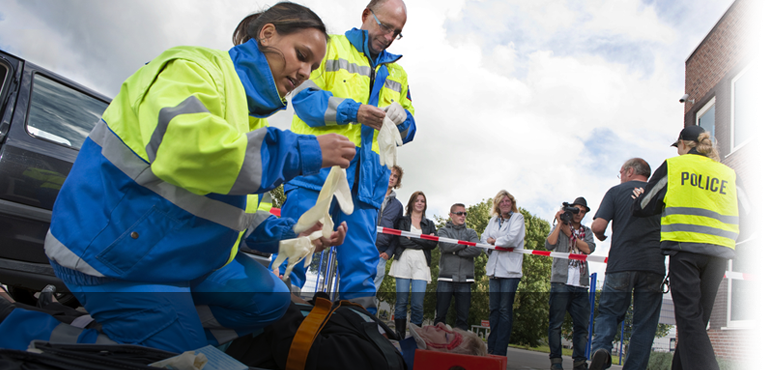| Toll Free : 1844 495 7333(injury hotline- new cases only) | |
| Text a Personal Injury Lawyer 24/7 and get instant help.TM (416 931 5015) | |
| Head Office : 905 495 7333 |
Negotiating Traffic Congestion: Have You Tried The Zipper Merge?
September 3, 2017Brampton personal injury lawyers frequently deal with car accident claims, where people have been injured in motor-vehicle accidents. Most of us assume that “accidents are accidents” whereas in fact, most of them are caused by someone’s fault or negligence.
Unfortunately, motor-vehicle accidents result in a variety of injuries, ranging from minor ones that require just one or two visits to the ER, to life-threatening and life-altering injuries that lead to enormous physical, financial and emotional consequences. The impact of these injuries are felt not just by the injured victim, but often by the entire family. Contact the nearest personal injury lawyer in Brampton for advice and assistance.
High traffic density and increased commuter traffic at peak hours can lead to delays, frustration, road rage and risky behavior by drivers. Accidents may involve not just one vehicle and multi-vehicle collisions are one of the features that traffic authorities are concerned about on heavily-congested roads.
Several strategies are being studied to deal with bottle-necks and traffic jams on certain expressways and highways. One of these is the “zipper merge” which has generated heated discussions across Canada.
What Is The Zipper Merge?
When there’s heavy traffic on one lane and the adjoining lane is closed due to some obstruction, some drivers at the far back may race ahead on the empty lane and then attempt to rejoin the top of the lane they’d left earlier. The zipper merge works because drivers delay their merge until their lane has ended and at the exact point of the bottle-neck, drivers from both lanes take turns at entering the exit, how a zipper closes. This kind of merge is something that most Canadians are taught never to do!
Drivers who follow the zipper merge method race towards the head of the bottle-neck and force their way into the open lane at the last minute and most Canadian drivers regard them as not following proper road etiquette. It could also lead to feelings of anger and rage among other drivers who are backed up in the heavily congested lane.
Benefits of Zipper Merging
However, several organizations like the Alberta Motor Association are now recommending this maneuver and feel that this technique can actually ease traffic congestion.
When followed correctly, with due courtesy from all drivers, the zipper merge is extremely effective. It’s useful especially in situations where multiple lanes merge into one or two. Approaching a bridge or ramp are other areas where the zipper could work well. Construction zones, road-works, accidents on the highway, etc are excellent spots where zipper merging can be used. “It’s OK to ‘cheat’” opined the Alberta Motor Association in a press release. Canadians are proud of their discipline and long-held road user behavior, but many of these traditions may need to be overhauled keeping the current exponential rate of traffic congestion.
Traffic behaviors like the zipper merge require a buy-in from all drivers and awareness of how best it should be practiced.
Driving requires one’s complete concentration and skills. Using the available tools and techniques that are acceptable to all road-users is one way of ensuring safety and harmony on the road.
Negotiating Traffic Congestion: Have You Tried The Zipper Merge?
September 3, 2017Brampton personal injury lawyers frequently deal with car accident claims, where people have been injured in motor-vehicle accidents. Most of us assume that “accidents are accidents” whereas in fact, most of them are caused by someone’s fault or negligence.
Unfortunately, motor-vehicle accidents result in a variety of injuries, ranging from minor ones that require just one or two visits to the ER, to life-threatening and life-altering injuries that lead to enormous physical, financial and emotional consequences. The impact of these injuries are felt not just by the injured victim, but often by the entire family. Contact the nearest personal injury lawyer in Brampton for advice and assistance.
High traffic density and increased commuter traffic at peak hours can lead to delays, frustration, road rage and risky behavior by drivers. Accidents may involve not just one vehicle and multi-vehicle collisions are one of the features that traffic authorities are concerned about on heavily-congested roads.
Several strategies are being studied to deal with bottle-necks and traffic jams on certain expressways and highways. One of these is the “zipper merge” which has generated heated discussions across Canada.
What Is The Zipper Merge?
When there’s heavy traffic on one lane and the adjoining lane is closed due to some obstruction, some drivers at the far back may race ahead on the empty lane and then attempt to rejoin the top of the lane they’d left earlier. The zipper merge works because drivers delay their merge until their lane has ended and at the exact point of the bottle-neck, drivers from both lanes take turns at entering the exit, how a zipper closes. This kind of merge is something that most Canadians are taught never to do!
Drivers who follow the zipper merge method race towards the head of the bottle-neck and force their way into the open lane at the last minute and most Canadian drivers regard them as not following proper road etiquette. It could also lead to feelings of anger and rage among other drivers who are backed up in the heavily congested lane.
Benefits of Zipper Merging
However, several organizations like the Alberta Motor Association are now recommending this maneuver and feel that this technique can actually ease traffic congestion.
When followed correctly, with due courtesy from all drivers, the zipper merge is extremely effective. It’s useful especially in situations where multiple lanes merge into one or two. Approaching a bridge or ramp are other areas where the zipper could work well. Construction zones, road-works, accidents on the highway, etc are excellent spots where zipper merging can be used. “It’s OK to ‘cheat’” opined the Alberta Motor Association in a press release. Canadians are proud of their discipline and long-held road user behavior, but many of these traditions may need to be overhauled keeping the current exponential rate of traffic congestion.
Traffic behaviors like the zipper merge require a buy-in from all drivers and awareness of how best it should be practiced.
Driving requires one’s complete concentration and skills. Using the available tools and techniques that are acceptable to all road-users is one way of ensuring safety and harmony on the road.








